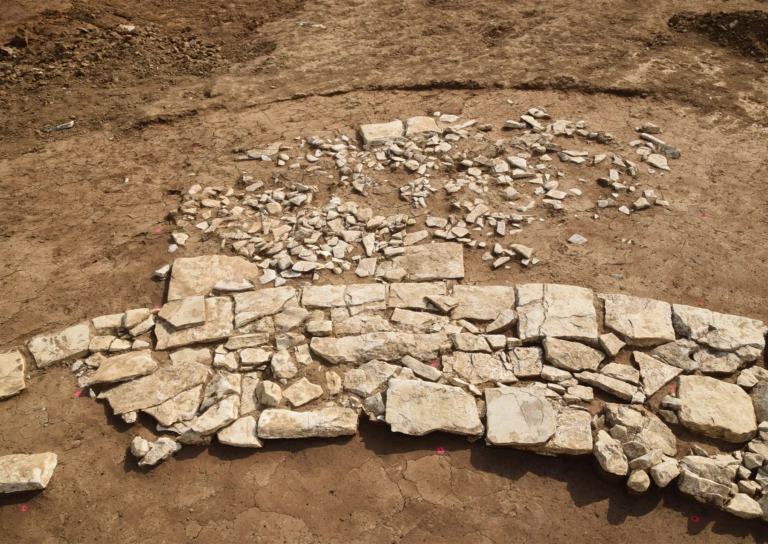In 15 BCE, the Romans invaded parts of Austria, Switzerland, and Germany. The region would eventually become the province of Raetia, but it was not valued for its economic resources. Instead, Raetia provided Rome with a strategic defensive position against potential invaders. Over 2,000 years later, the mighty ancient empire’s historic presence in the region still comes up to the surface every once in a while.
Construction work and related archaeological endeavors in the German Upper Bavarian district of Eichstätt has revealed the foundations of a Roman tumulus, or burial mound. Structures like these are rare in the former province of Raetia, and the excavations also revealed evidence of prehistoric settlements and ceramic remains.
“We did not expect to discover a burial monument of this age and size here,” Mathias Pfeil, General Conservator of the Bavarian State Office for the Preservation of Historical Monuments, said in a translated statement. “The tumulus was located directly on an important Roman transport axis, allowing the family to commemorate a deceased person in a way that was visible from afar. The tomb was both a place of remembrance and an expression of social status.”

The discovery consists of a carefully arranged 39-foot-wide stone ring with a square extension that likely featured a statue or stele (a stone slab engraved with text and/or images). The stone circle is all that remains of the wall that once encircled the tumulus, and a tumuli with such large stone ring walls are “extremely rare” in Raetia.
Most burial mounds in the region date back further to the Bronze and Iron Ages. In fact, the researchers are now trying to determine if the tumulus represents an intentional revival of pre-Roman sepulture traditions. Nevertheless, Roman central Europe and Italy had a long tradition of tumuli starting in the first century CE. Romans sometimes even reused Bronze and Iron Age structures to build their burial mounds.
Interestingly, the tumulus in question is empty of both a skeleton and grave goods. That doesn’t necessarily mean tomb raiders got there first, however. Since the burial mound is located along an important Roman road and close to a former Roman country estate, researchers theorize that the tumulus is a cenotaph, a memorial—sometimes an empty tomb—to someone interred elsewhere.



